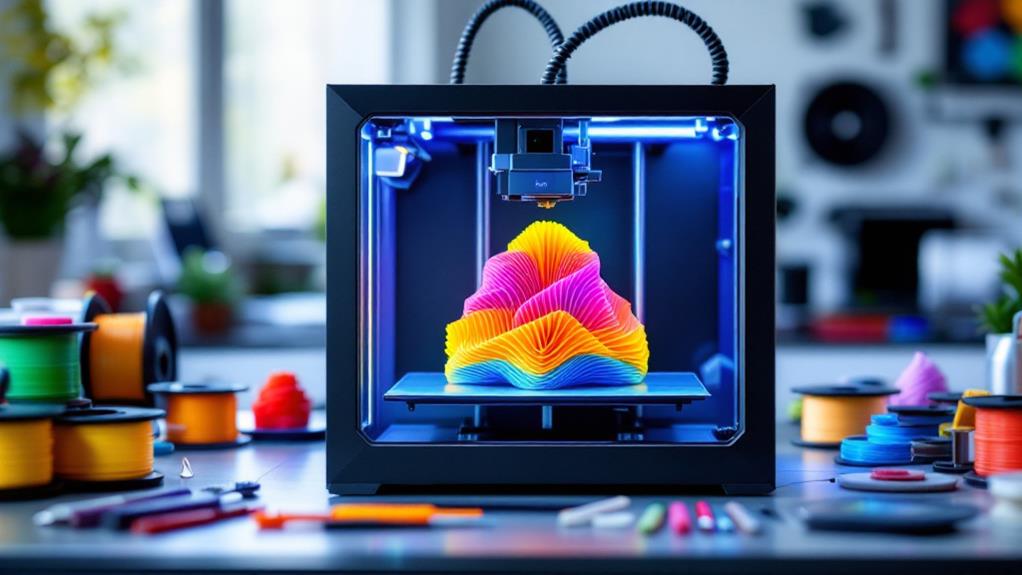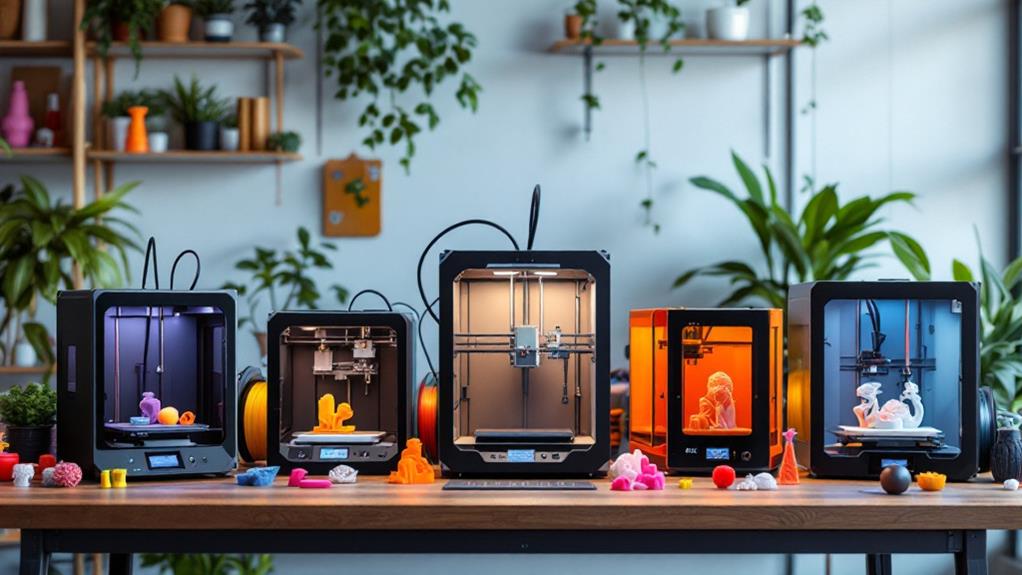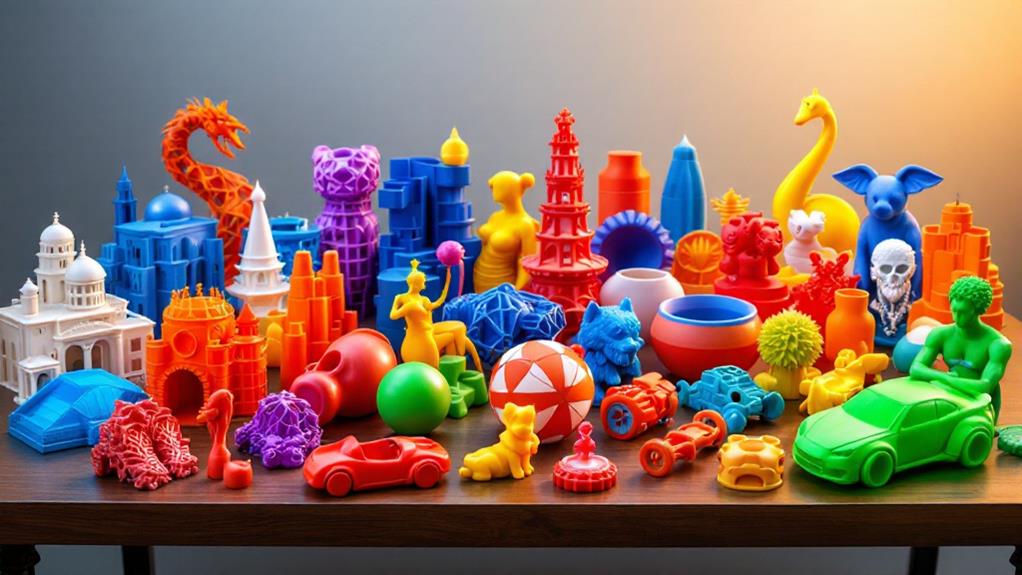What Is a 3D Printer? A Complete Guide for Beginners

3D printers are incredible machines that convert digital designs into physical objects by building them layer by layer. Imagine taking a 3D model from your computer and turning it into something you can hold in your hand. Different types, like FDM and SLA printers, use different techniques, such as melting plastic or curing resin. The material choice, ranging from plastics to metals, influences your final product. This technology is used across countless fields, from creating custom prosthetics to artistic endeavors. Regardless of your interest in rapid prototyping or educational projects, there's a whole world of 3D printing waiting to investigate.
Understanding 3D Printing
3D printing, sometimes known as additive manufacturing, is a fascinating process that transforms digital designs into tangible objects. You might wonder where it all began. The history of 3D printing dates back to the 1980s when Charles Hull invented stereolithography, a technique that laid the foundation for modern 3D printing. Over the decades, this technology has evolved considerably, expanding from industrial use to personal and educational applications.
Understanding the benefits of 3D printing is essential. For starters, it allows for rapid prototyping, enabling you to test and refine designs quickly and cost-effectively. This capability can drastically reduce the time it takes to bring a product to market. Furthermore, 3D printing offers unparalleled customization. You can create personalized items tailored to specific needs or preferences, which is particularly beneficial in industries like healthcare, where custom prosthetics or dental implants can be produced.
Moreover, 3D printing promotes innovation by lowering barriers to entry. With access to a 3D printer, you're empowered to experiment and iterate without the constraints of traditional manufacturing methods. This democratization of design and production can lead to breakthroughs in numerous fields, from art to engineering.
How 3D Printers Work
Imagine holding a digital blueprint in your hands, and with just a few clicks, watching it transform into a physical object. That's the magic of a 3D printer! The process begins with creating or downloading a 3D model on your computer. Once you've got the design, the 3D printer mechanisms take over, translating the digital file into tangible reality. Let's break down the printing process:
- Preparation: You start by slicing the 3D model into thin layers using specialized software. This information is then sent to the 3D printer, serving as the roadmap for construction.
- Printing: The printer heats up its material, regardless of whether it's plastic, metal, or another substance, and deposits it layer by layer. Each layer fuses with the one below it, gradually building up your object. The precision of the 3D printer mechanisms guarantees that every detail is captured.
- Post-Processing: Once printing is complete, you might need to clean up or cure the object. This step can include removing any support structures or smoothing rough edges.
Types of 3D Printers

When diving into the world of 3D printing, you'll quickly uncover a variety of printer types, each with its unique strengths and capabilities. FDM printers, or Fused Deposition Modeling printers, are the most common and affordable option. They work by extruding melted plastic filament layer by layer. They're user-friendly, but require regular printer maintenance to guarantee smooth operation.
SLA printers, or Stereolithography printers, use a laser to cure resin into solid layers. They offer high precision and smooth surfaces, ideal for intricate designs, though they can be more costly. Then there's SLS technology, which stands for Selective Laser Sintering. This technique uses a laser to fuse powdered material, perfect for producing durable, complex parts without needing support structures.
DLP printing, or Digital Light Processing, is similar to SLA but uses a digital light projector to cure resin. It's fast and offers fine details, suitable for industries requiring high precision.
Selecting the right printer involves a cost analysis of your budget, the design software you'll use, and your adherence to industry standards. Each type has its own learning curve, but with the right choice, you can bring your creative visions to life.
Materials Used in 3D Printing
Engage yourself in the world of 3D printing materials, and you'll uncover a wide range designed to meet different project needs. Your expedition begins with filament types, which include PLA, ABS, and PETG. Each type offers unique properties affecting printing speed, layer thickness, and post processing techniques. PLA is a popular choice for beginners due to its ease of use and biodegradable options. ABS, on the other hand, is known for its strength and durability, making it ideal for more robust projects.
Resin choices expand your possibilities further, particularly in SLA and DLP printing. Resins offer high detail and smooth finishes, but require careful handling and specific post processing techniques like UV curing. You'll find resins in multiple types, from standard to flexible and even castable for jewelry or dental applications.
For those seeking innovation, composite materials and metal powders come into play. Composite filaments blend materials like wood or carbon fiber with traditional plastics, creating unique textures and strengths. Metal powders, used in more advanced printers, allow for the creation of metal parts with remarkable detail.
Consider these material categories:
- Filament Types
- Resin Choices
- Composite Materials & Metal Powders
Each plays an essential role in achieving your desired 3D printing outcomes.
Applications of 3D Printing

Few technologies have changed so many fields as 3D printing has. In the medical world, 3D printing has transformed the creation of prosthetics and implants, offering tailored solutions that fit patients perfectly. Imagine being able to print a custom-made device that improves someone's quality of life; that's the power of medical applications in 3D printing.
In education, 3D printing serves as an incredible tool for hands-on learning. You can create tangible models to explain complex concepts, making subjects like biology, engineering, and art more accessible and engaging. Students can see and touch what they're learning about, which can greatly improve understanding and retention.
Architects use 3D printing to develop detailed architectural models, allowing them to visualize and refine their designs efficiently. By doing so, they can present clients with a clear representation of projects before construction begins.
For businesses, 3D printing offers unparalleled prototyping services. You can rapidly create and test product designs, reducing time and costs associated with traditional manufacturing processes. Furthermore, artistic creations and customized products benefit greatly from 3D printing, allowing artists and designers to investigate new possibilities and bring unique visions to life with precision and creativity.



